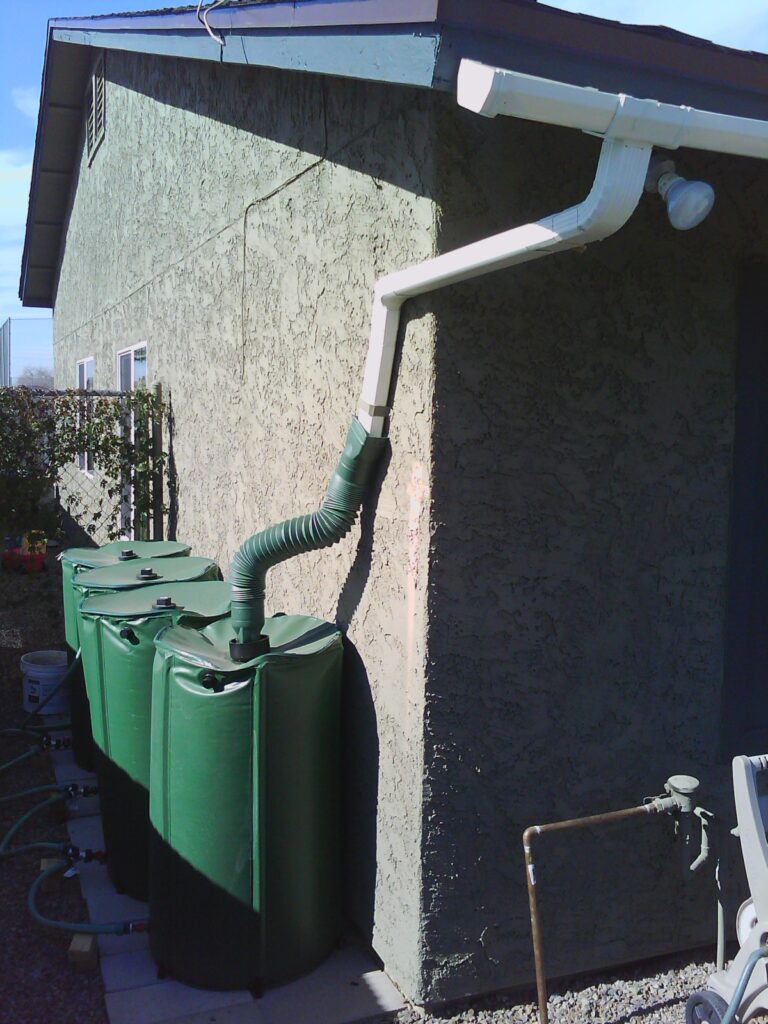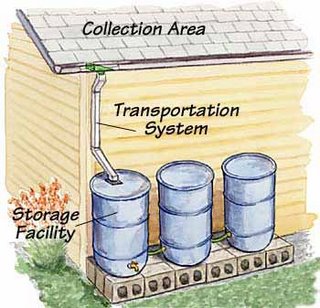Rainwater Harvesting
During the past century, the world population has tripled, but water use has increased six-fold. Getting clean drinkable water is increasingly getting more difficult throughout the world.
So what do we do when the systems are not in place to support our water needs? Sounds unrealistic but the risk of facing water problems in the near future is extremely high and in fact, various cities are already suffering water issues.
The City of Flagstaff, AZ is trying to cut water consumption by 20 percent to postpone the need for pumping water from Red Gap Ranch. Next water prices will be increasing. The good news is there are simple things you can do now so you’re not affected.
What is Rainwater Harvesting?
Rainwater Harvesting (RWH) is simply collecting, storing and purifying the rainfall that falls on your roof. It can be used for irrigation, flushing toilets, washing clothes, washing cars, pressure washing, or it can be purified for use as everyday drinking water.
In addition to being the most ecological form of irrigation, rainwater also happens to be the best water for your plants! Ever wonder why your plants seem to perk up after a rain? Rainwater is naturally free of salts and contains dissolved nitrogen and other compounds that act like fertilizer for the plants in your garden. Imagine being able to give your plants rainwater throughout the year and not just when it happens to rain.
The rainwater from our collection system measures between 50-90 ppm once it settles in the barrels. We have measured pure rainwater at 11 ppm. Compare that to our tap water; it measures roughly 350 ppm.

A rainwater system consists of a collection area, transport system and the storage facility. Typically the roof serves as the collection area, rain gutters as the transport system and rain barrels as the storage facility. Here in Arizona, we found TanknBarrel.com to be the most cost effective for rain barrels.
We offer rainwater to potable water, reverse osmosis and sand filter layout diagrams. Check out our Etsy site for the drawings.
Other benefits of RWH:
- Availability not subject to outside utility control
- Not subject to pipelines interruption
- You control the quality
- Available even when power is interrupted
- Reduces run-off and erosion
- Available even when storms & disaster strike
- Naturally pure
- Naturally soft (no dissolved minerals)
- Free
- Sustainable
- Free of chlorine and its byproducts
- Free of pesticides and other man-made contaminants
- Lower water supply cost
- Improved plant growth
Rainwater Facts
- The first flush of rainwater after a dry season should be allowed to run to waste as it will be contaminated with dust, bird droppings etc.
- Roof gutters should have sufficient incline to avoid standing water. They must be strong enough, and large enough to carry peak flows.
- Storage tanks should be covered to prevent mosquito breeding and to reduce evaporation losses, contamination and algae growth.
- Rainwater harvesting systems require regular maintenance and cleaning to keep the system hygienic.

Did you know?
![]()
![]() One inch of rain on a 2000 sq ft roof produces 1,250 gallons of water.
One inch of rain on a 2000 sq ft roof produces 1,250 gallons of water.
![]()
![]() The roof on a ‘typical’ four bedroom family home captures more than 26,000 gallons of rainwater a year.
The roof on a ‘typical’ four bedroom family home captures more than 26,000 gallons of rainwater a year.
![]()
![]() Many houses in Austria come with rain water harvesting systems.
Many houses in Austria come with rain water harvesting systems.
![]() Want to make your rain water drinkable? A simple cheap sand filter will do the trick!
Want to make your rain water drinkable? A simple cheap sand filter will do the trick!

